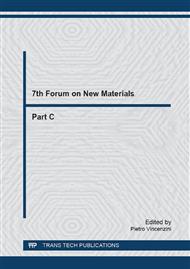p.40
p.48
p.54
p.61
p.69
p.75
p.81
p.90
p.94
Memory Loss in a Tantalum Oxide Memristor
Abstract:
The tantalum oxide memristor may have a promising future as key element in innovativevery-high speed ultra-low power extra-large density nonvolatile memories. It is therefore timely andrelevant to investigate the nonlinear dynamics of this device in view of the interesting opportunities itmay open up in the world of electronics in the years to come. In numerical simulations of an accuratemodel of the tantalum oxide memristor manufactured at Hewlett Packard Labs we observed a surprisingphenomenon which was never reported earlier. Under AC periodic excitation the memristorexhibits unique asymptotic behaviour, irrespective of the initial condition. Thus the device may bestimulated in such a way to forget its past history. This memory erase effect, unexpected in a memristordevice, is closely related to the concept of fading memory from nonlinear system theory, and wasrecently confirmed through experiments conducted on a sample device.
Info:
Periodical:
Pages:
94-101
Citation:
Online since:
October 2016
Price:
Сopyright:
© 2017 Trans Tech Publications Ltd. All Rights Reserved
Share:
Citation:


